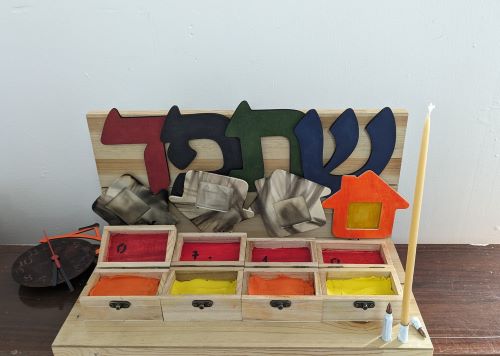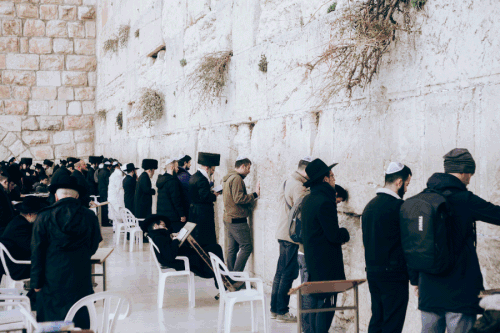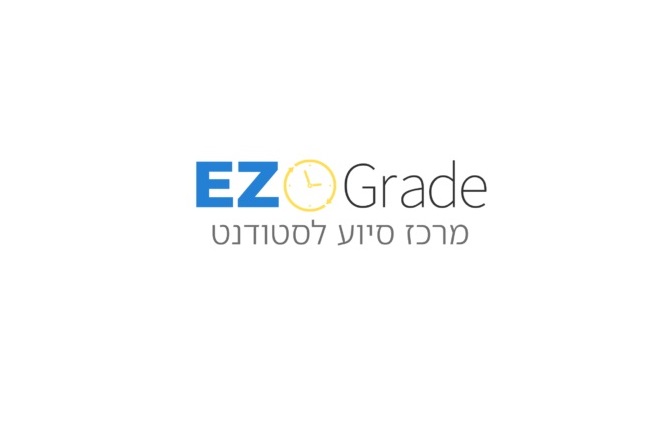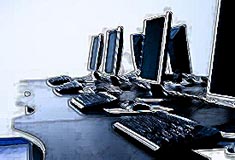Shnayim Mikra, Echad Targum
הרב שי טחןכב טבת, תשפד03/01/2024Commencing the Book of Shemot serves as a poignant reminder for us to align ourselves with the practice of Shnayim Mikra
תגיות:שניים מקרא ואחד תרגוםתורהלימוד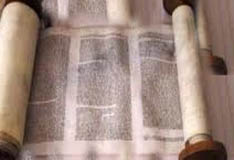
"ואלה שמות בני ישראל": כתבו הראשונים כי בפסוק זה נרמז מצות חכמינו לקרוא 'שנים מקרא ואחד תרגום' בראשי תיבות: ו'חייב א'דם ל'קרות ה'פרשה ש'נים מ'קרא ו'אחת ת'רגום;
"And these are the names of the children of Israel." This pasuk hints the obligation of 'Shnayim Mikra ve-echad Targum,' represented by the initials: Shin (ש) for 'Shnayim' (two), Mem (מ) for 'Mikra' (Scripture), Vav (ו) for 'Ve' (and), Alef (א) for 'Achat' (one), Tav (ת) for 'Targum' (translation). Thus, a person is obligated to read the portion twice in Scripture and once in translation.
Commencing the Book of Shemot serves as a poignant reminder for us to align ourselves with the practice of Shnayim Mikra, Echad Targum—reading the weekly Torah portion twice accompanied by the translation of Onkelos.
The Gemara (ברכות ח,ב) states that an individual should consistently conclude their Torah portions in sync with the congregation. The congregation reads a specific Torah portion each Shabbat, and in the week leading up to that Shabbat, it is incumbent upon each person to read the Torah text of the weekly portion twice and its translation once.
The Gemara also provides an incentive, affirming that one who aligns the completion of their Torah portions with the congregation is rewarded with an extension of their days and years.
Early poskim have presented various reasons to elucidate the establishment of this practice by Chazal. Let's enumerate some of these explanations:
a. Torah understanding:
Sefer Chinuch, in its introduction, articulates that the purpose behind Shnayim Mikra, Echad Targum is to enhance the reader's comprehension of the Torah portion. By reading the parsha in one's home with this approach, a deeper understanding and enlightenment regarding the content can be achieved.
The Rosh (אורחות חיים יום ב’ אות לז) as well suggests that the intent behind the reading is to enable greater precision in one's study. In essence, part of a person's obligation in Torah study is to engage in Shnayim Mikra, Echad Targum, fostering a more meticulous and in-depth examination of the verses being read.
b. complete the entire Torah:
Trumat HaDeshen(שאלה כג) , citing the Ramban, asserts that the purpose of this reading practice is for an individual to personally complete the entire Torah within the year, paralleling the congregation's accomplishment of finishing the reading of the entire Torah.
c. Becoming fluent with the parasha:
Trumat HaDeshen also notes Rabbi Chananel's perspective, who contends that the reason behind this practice is to become proficient and fluent in the weekly Torah reading. The Levush (או״ח סימן רפה ס״א,ז) expressed the same viewpoint.
The Halachot:
Now that we've explored the reasons Chazal established this reading, let's delve into the halachot associated with it.
Is reading Shnayim Mikra an obligation?
While the Gemara doesn't explicitly state it as an obligation, the Rambam and the Shulchan Aruch modified the wording and asserted that one is obligated to read Shnayim Mikra. This modification was made to emphasize that it is not merely a commendable custom but a genuine obligation. (שו"ת שבט הלוי ח״ח סימן מו)
Is the obligation of reading Shnayim Mikra applicable to Bnei Torah who learn all day?
Yes, even for individuals who dedicate their time to Torah study throughout the day, the obligation to read Shnayim Mikra remains. While it is a Rabbinical mitzvah, no one is exempt from it, as is the case with other mitzvot where those who engage in continuous Torah study are not exempt. (שו"ת אגר"מ או״ח ח״ה סימן יז)
Are women obligated to read Shnayim Mikra?
No, women are exempt from the obligation of Shnayim Mikra, as it is considered part of Torah study, and women are generally exempt from Torah study.
When is the Time of reading?
The optimal time for reading is each week, beginning from Mincha on the preceding Shabbat, but avoiding reading prior to Shabbat Mincha. It is recommended to complete the reading no later than the Shabbat morning meal. If one hasn't finished by that time, they may continue reading after the meal until Mincha.
If someone misses that designated time frame, they have the option to continue reading until the following Wednesday since those days still pertain to the previous Shabbat. However, it is advised not to read beyond Simchat Torah, as that marks the absolute latest deadline for completing the reading.
How is the reading done?
There are two accepted methods. One can either read each verse twice followed by the Targum, or read each verse twice until the end of the parasha, which is indicated in some chumashim with the letters peh or samech and then continue with the Targum. Either approach is acceptable.
Can one read the Targum in English, Russian, or another language that he understands instead of Aramaic?
There is a dispute among the Rishonim regarding whether one may study commentaries on the verses instead of reading the Targum. Some assert that learning Rashi is permissible in place of the Targum. The Shulchan Aruch (סימן רפה ס״ב) rules that one may read Rashi instead but suggests that a God-fearing person should ideally read both the Targum and Rashi. Since it is evident that one is not strictly obligated to read only the Targum, other interpretations or languages that one understands better would be acceptable. Therefore, one can read the English translation if he doesn't understand Aramaic (מובא בשם הרב משה פישטיין בספר יגל יעקב עמוד רח). Nevertheless, according to Kabbalah and many poskim, reading Onkelos is preferable(כה״ח אות כ) .
May one stop in the middle of reading to talk or eat?
According to the pshat it is permissible. However, according to Kabbalah, it is not permitted(כה״ח סעיף טו, לב) . Chacham Ovadia wrote that stopping for the purpose of a mitzvah is allowed. For example, if someone asks him to share a Torah thought with the congregation or inquire about a halacha while he is reading, it is considered permissible. If one is thirsty, they may pause to drink and then resume the reading (חזו"ע שבת ח"א עמוד שי).
Must Shnayim Mikra be read in order?
The poskim wrote that Shnayim Mikra should be read in order. Therefore, not only in the same parasha should later psukim not be read first, but also if one wasn't able to read one week and now has to read two parashot (one of the new week's portion and the previous), he should read the previous one first to maintain the order as it is written (כה״ח סעיף טו, חזו״ע עמוד שיד).
Is it necessary for someone who prepares the Torah reading for the synagogue to read Shnayim Mikra again?
No, someone who prepares the Torah reading for the synagogue does not need to read Shnayim Mikra again. The halacha states (סעיף ו) that one who teaches children to read doesn't have to repeat the reading, as he has already read with the students. From this, we understand that one isn't required to read with the specific intention of fulfilling Shnayim Mikra. However, reading the translation for Targum is still necessary.
"And these are the names of the children of Israel." This pasuk hints the obligation of 'Shnayim Mikra ve-echad Targum,' represented by the initials: Shin (ש) for 'Shnayim' (two), Mem (מ) for 'Mikra' (Scripture), Vav (ו) for 'Ve' (and), Alef (א) for 'Achat' (one), Tav (ת) for 'Targum' (translation). Thus, a person is obligated to read the portion twice in Scripture and once in translation.
Commencing the Book of Shemot serves as a poignant reminder for us to align ourselves with the practice of Shnayim Mikra, Echad Targum—reading the weekly Torah portion twice accompanied by the translation of Onkelos.
The Gemara (ברכות ח,ב) states that an individual should consistently conclude their Torah portions in sync with the congregation. The congregation reads a specific Torah portion each Shabbat, and in the week leading up to that Shabbat, it is incumbent upon each person to read the Torah text of the weekly portion twice and its translation once.
The Gemara also provides an incentive, affirming that one who aligns the completion of their Torah portions with the congregation is rewarded with an extension of their days and years.
Early poskim have presented various reasons to elucidate the establishment of this practice by Chazal. Let's enumerate some of these explanations:
a. Torah understanding:
Sefer Chinuch, in its introduction, articulates that the purpose behind Shnayim Mikra, Echad Targum is to enhance the reader's comprehension of the Torah portion. By reading the parsha in one's home with this approach, a deeper understanding and enlightenment regarding the content can be achieved.
The Rosh (אורחות חיים יום ב’ אות לז) as well suggests that the intent behind the reading is to enable greater precision in one's study. In essence, part of a person's obligation in Torah study is to engage in Shnayim Mikra, Echad Targum, fostering a more meticulous and in-depth examination of the verses being read.
b. complete the entire Torah:
Trumat HaDeshen(שאלה כג) , citing the Ramban, asserts that the purpose of this reading practice is for an individual to personally complete the entire Torah within the year, paralleling the congregation's accomplishment of finishing the reading of the entire Torah.
c. Becoming fluent with the parasha:
Trumat HaDeshen also notes Rabbi Chananel's perspective, who contends that the reason behind this practice is to become proficient and fluent in the weekly Torah reading. The Levush (או״ח סימן רפה ס״א,ז) expressed the same viewpoint.
The Halachot:
Now that we've explored the reasons Chazal established this reading, let's delve into the halachot associated with it.
Is reading Shnayim Mikra an obligation?
While the Gemara doesn't explicitly state it as an obligation, the Rambam and the Shulchan Aruch modified the wording and asserted that one is obligated to read Shnayim Mikra. This modification was made to emphasize that it is not merely a commendable custom but a genuine obligation. (שו"ת שבט הלוי ח״ח סימן מו)
Is the obligation of reading Shnayim Mikra applicable to Bnei Torah who learn all day?
Yes, even for individuals who dedicate their time to Torah study throughout the day, the obligation to read Shnayim Mikra remains. While it is a Rabbinical mitzvah, no one is exempt from it, as is the case with other mitzvot where those who engage in continuous Torah study are not exempt. (שו"ת אגר"מ או״ח ח״ה סימן יז)
Are women obligated to read Shnayim Mikra?
No, women are exempt from the obligation of Shnayim Mikra, as it is considered part of Torah study, and women are generally exempt from Torah study.
When is the Time of reading?
The optimal time for reading is each week, beginning from Mincha on the preceding Shabbat, but avoiding reading prior to Shabbat Mincha. It is recommended to complete the reading no later than the Shabbat morning meal. If one hasn't finished by that time, they may continue reading after the meal until Mincha.
If someone misses that designated time frame, they have the option to continue reading until the following Wednesday since those days still pertain to the previous Shabbat. However, it is advised not to read beyond Simchat Torah, as that marks the absolute latest deadline for completing the reading.
How is the reading done?
There are two accepted methods. One can either read each verse twice followed by the Targum, or read each verse twice until the end of the parasha, which is indicated in some chumashim with the letters peh or samech and then continue with the Targum. Either approach is acceptable.
Can one read the Targum in English, Russian, or another language that he understands instead of Aramaic?
There is a dispute among the Rishonim regarding whether one may study commentaries on the verses instead of reading the Targum. Some assert that learning Rashi is permissible in place of the Targum. The Shulchan Aruch (סימן רפה ס״ב) rules that one may read Rashi instead but suggests that a God-fearing person should ideally read both the Targum and Rashi. Since it is evident that one is not strictly obligated to read only the Targum, other interpretations or languages that one understands better would be acceptable. Therefore, one can read the English translation if he doesn't understand Aramaic (מובא בשם הרב משה פישטיין בספר יגל יעקב עמוד רח). Nevertheless, according to Kabbalah and many poskim, reading Onkelos is preferable(כה״ח אות כ) .
May one stop in the middle of reading to talk or eat?
According to the pshat it is permissible. However, according to Kabbalah, it is not permitted(כה״ח סעיף טו, לב) . Chacham Ovadia wrote that stopping for the purpose of a mitzvah is allowed. For example, if someone asks him to share a Torah thought with the congregation or inquire about a halacha while he is reading, it is considered permissible. If one is thirsty, they may pause to drink and then resume the reading (חזו"ע שבת ח"א עמוד שי).
Must Shnayim Mikra be read in order?
The poskim wrote that Shnayim Mikra should be read in order. Therefore, not only in the same parasha should later psukim not be read first, but also if one wasn't able to read one week and now has to read two parashot (one of the new week's portion and the previous), he should read the previous one first to maintain the order as it is written (כה״ח סעיף טו, חזו״ע עמוד שיד).
Is it necessary for someone who prepares the Torah reading for the synagogue to read Shnayim Mikra again?
No, someone who prepares the Torah reading for the synagogue does not need to read Shnayim Mikra again. The halacha states (סעיף ו) that one who teaches children to read doesn't have to repeat the reading, as he has already read with the students. From this, we understand that one isn't required to read with the specific intention of fulfilling Shnayim Mikra. However, reading the translation for Targum is still necessary.
הוסף תגובה

עוד מהרב שי טחן
עוד בנושא הלכה



.jpg)
